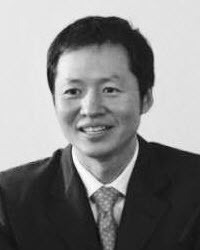[Management in Korea] Time for Korean bigwigs to make their cultures global
By Korea HeraldPublished : Oct. 24, 2017 - 19:29
Management in Korea is a regular column written by the members of Egon Zehnder Seoul touching on various aspects of Korean enterprises and business leaders and offering management tips. -- Ed.
Given that Korea’s population is only about 50 million, the country’s largest companies have long understood that their ambitions could only be reached by developing into truly global organizations. And many Korean enterprises have done exactly this. Not just the most well-known chaebol like Samsung, Hyundai-Kia and LG, but many organizations in the top tier of Korean corporations have substantial operations around the world.
Given that Korea’s population is only about 50 million, the country’s largest companies have long understood that their ambitions could only be reached by developing into truly global organizations. And many Korean enterprises have done exactly this. Not just the most well-known chaebol like Samsung, Hyundai-Kia and LG, but many organizations in the top tier of Korean corporations have substantial operations around the world.

Unfortunately, you would never know this by visiting the headquarters of these enterprises. We estimate that less than 2 percent of executives at Korea’s top 100 companies are non-Korean. For comparison, consider that 11 percent of just the CEOs of the US Fortune 500 are foreign born. This was not always the case; a generation ago, the management teams of large US corporations were as homogeneous as Korean headquarters are today. But American companies gradually realized that as competition became truly global, its executive talent pool would have to become global as well.
When we talk about this issue with Korean business leaders, we are usually told that prior attempts to globalize company leadership were a failure, with the non-Korean talent leaving as soon as their contract was up — if not before. But Korean companies who think this means they should abandon attempts to reach outside Korea for leaders are learning the wrong lesson from this experience. The fact is that Korean companies are at risk of losing their competitive edge if they continue to insist on excluding the rest of the world from the C-suite. In an increasingly borderless economy, provincialism is the fast track to irrelevance.
When we talk about this issue with Korean business leaders, we are usually told that prior attempts to globalize company leadership were a failure, with the non-Korean talent leaving as soon as their contract was up — if not before. But Korean companies who think this means they should abandon attempts to reach outside Korea for leaders are learning the wrong lesson from this experience. The fact is that Korean companies are at risk of losing their competitive edge if they continue to insist on excluding the rest of the world from the C-suite. In an increasingly borderless economy, provincialism is the fast track to irrelevance.

But any attempt to globalize Korea’s executive talent pool must begin with an awareness of the barriers that non-Korean executives face here. It goes far beyond the difficulty keeping up at a hoesik or the complications that come from conflicting customs. Most Korean company cultures are decidedly militaristic, with strict hierarchies that discourage not just dissent but even open dialogue. As one non-Korean executive we had placed at a chaebol remarked to us, “In all the meetings I’ve been to here, I’ve never heard anyone ask ‘Why?’ when told to do something.” The reason, of course, is that asking “Why?’ is a quick way to get fired.
With this environment, companies may preserve their culture, but at the cost of squelching the new ideas that are essential in an innovation-driven world. In other words, Korean enterprises need to stop waiting for the rest of the world to conform to Korean behaviors and instead create environments that are more open, more experimental, more global.
If this seems like an impossible task, consider that many western companies from the pre-digital age have undergone similar transformations to remain competitive.
One technique for doing so starts with sending the board and senior management on a fact-finding mission so that they can observe the practices of innovative companies firsthand. The insights from those trips then form a vision for a separate organization within the larger enterprise, tasked with tackling challenges that have stymied traditional approaches.
The new organization is often housed away from other operations and is free from many of the formal and informal rules and constraints of the parent company. It thus becomes a laboratory for innovations unlikely to be created in the larger environment.
With this environment, companies may preserve their culture, but at the cost of squelching the new ideas that are essential in an innovation-driven world. In other words, Korean enterprises need to stop waiting for the rest of the world to conform to Korean behaviors and instead create environments that are more open, more experimental, more global.
If this seems like an impossible task, consider that many western companies from the pre-digital age have undergone similar transformations to remain competitive.
One technique for doing so starts with sending the board and senior management on a fact-finding mission so that they can observe the practices of innovative companies firsthand. The insights from those trips then form a vision for a separate organization within the larger enterprise, tasked with tackling challenges that have stymied traditional approaches.
The new organization is often housed away from other operations and is free from many of the formal and informal rules and constraints of the parent company. It thus becomes a laboratory for innovations unlikely to be created in the larger environment.

In the Korean version, the new organization would be led by a mix of Korean and non-Korean executives, with the Koreans drawn from the ranks of those who have worked and studied abroad. These two groups of leaders would work together to create from scratch a new, less hierarchical and more open culture.
Doing so, of course, will require constant reinforcement among the managers and workforce, using training, policies and compensation models that have built innovative organizations elsewhere but have been adapted to the Korean environment.
This will not be easy, but the end result will be a culture that is more welcoming to executives from other parts of the world than chaebols are today. Indeed, this process will create an enterprise that foreign executives want to join.
Such an experiment would jumpstart culture change while demonstrating a viable path that the larger organization then could follow.
By Eugene Kim and Kim Ah-jeong
Eugene Kim is the managing partner of advisory firm Egon Zehnder Seoul. He works with public and private corporations, family-owned enterprises, nonprofit and government agencies to provide board advisory services, CEO and leadership succession planning and development. He can be reached at Eugene.Kim@egonzehnder.com
Kim Ah-jeong is the head of research at Egon Zehnder Seoul. She leads the Seoul research team, covering more than 200 projects from various industries. She can be reached at AJ.Kim@egonzehnder.com
Doing so, of course, will require constant reinforcement among the managers and workforce, using training, policies and compensation models that have built innovative organizations elsewhere but have been adapted to the Korean environment.
This will not be easy, but the end result will be a culture that is more welcoming to executives from other parts of the world than chaebols are today. Indeed, this process will create an enterprise that foreign executives want to join.
Such an experiment would jumpstart culture change while demonstrating a viable path that the larger organization then could follow.
By Eugene Kim and Kim Ah-jeong
Eugene Kim is the managing partner of advisory firm Egon Zehnder Seoul. He works with public and private corporations, family-owned enterprises, nonprofit and government agencies to provide board advisory services, CEO and leadership succession planning and development. He can be reached at Eugene.Kim@egonzehnder.com
Kim Ah-jeong is the head of research at Egon Zehnder Seoul. She leads the Seoul research team, covering more than 200 projects from various industries. She can be reached at AJ.Kim@egonzehnder.com
-
Articles by Korea Herald







![[Graphic News] More Koreans say they plan long-distance trips this year](http://res.heraldm.com/phpwas/restmb_idxmake.php?idx=644&simg=/content/image/2024/04/17/20240417050828_0.gif&u=)
![[KH Explains] Hyundai's full hybrid edge to pay off amid slow transition to pure EVs](http://res.heraldm.com/phpwas/restmb_idxmake.php?idx=644&simg=/content/image/2024/04/18/20240418050645_0.jpg&u=20240419100350)






![[From the Scene] Monks, Buddhists hail return of remains of Buddhas](http://res.heraldm.com/phpwas/restmb_idxmake.php?idx=652&simg=/content/image/2024/04/19/20240419050617_0.jpg&u=20240419175937)

![[KH Explains] Hyundai's full hybrid edge to pay off amid slow transition to pure EVs](http://res.heraldm.com/phpwas/restmb_idxmake.php?idx=652&simg=/content/image/2024/04/18/20240418050645_0.jpg&u=20240419100350)

![[Today’s K-pop] Illit drops debut single remix](http://res.heraldm.com/phpwas/restmb_idxmake.php?idx=642&simg=/content/image/2024/04/19/20240419050612_0.jpg&u=)